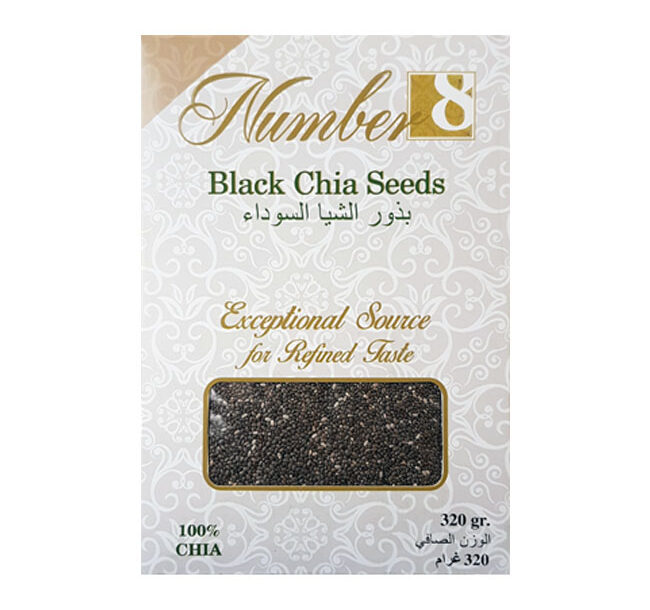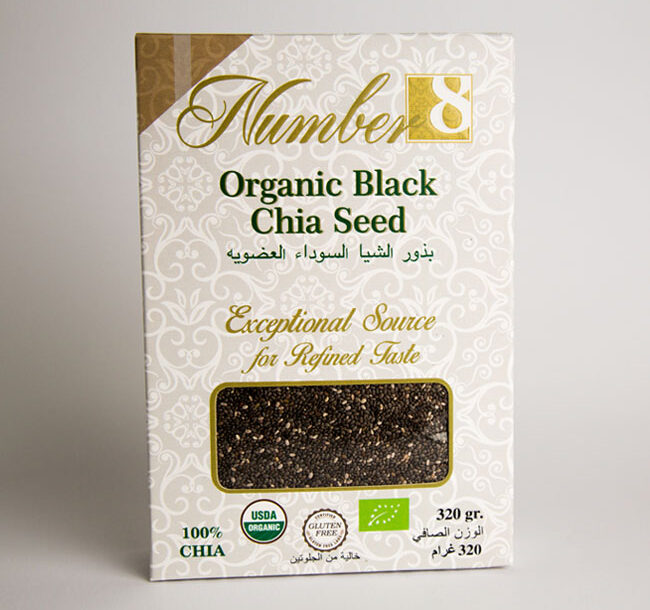
Chia
Category: Chia
Chia Seeds is one of the healthiest food products, it contains very high amounts of essential fatty acids that helps to lubricate joints and lower blood pressure, also, the class of essential fatty acids can be converted into prostaglandins that are known to have anti-inflammatory and Pain Relief effects it also help to boost metabolism and promote lean muscle mass, which can lead to weight loss. The soluble Fiber in Chia Seeds helps stabilize blood glucose levels. The Fiber from the seeds helps absorb toxins and helps facilitate elimination from the body.
What is Chia ?
Chia seeds come from the species Salvia Hispanica, a member of the flowering mint family. The seeds are very tiny and come in variety of colors. The most popular variety is black, but white is fairly common and there are various shades of brown and speckled.
Chia is an annual herb growing up to 1.75 metres (5.7 feet) tall, with opposite leaves that are 4–8 cm (1.6–3.1 in) long and 3–5 cm (1.2–2.0 in) wide. Its flowers are purple or white and are produced in numerous clusters in a spike at the end of each stem. Chia is hardy from USDA Zones 9–12. Many plants cultivated as S. hispanica are in fact Salvia lavandulifolia.
Chia is grown commercially for its seed, a food rich in omega-3 fatty acids since the seeds yield 25–30% extractable oil, including α-linolenic acid. The composition of the fat of the oil may be 55% ω-3, 18% ω-6, 6% ω-9, and 10% saturated fat.
Typically, Chia seeds are small ovals with a diameter of approximately 1 mm (0.039 in). They are mottle-colored with brown, gray, black, and white. The seeds are hydrophilic, absorbing up to 12 times their weight in liquid when soaked. While soaking, the seeds develop a mucilaginous coating that gives Chia-based beverages a distinctive gel texture.
Chia (or Chian or Chien) has mostly been identified as Salvia Hispanica L. Today, Chia is grown and consumed commercially in its native Mexico and Guatemala, as well as Bolivia, Argentina, Ecuador, Nicaragua, and Australia. New patented varieties of Chia have been developed in Kentucky for cultivation in northern latitudes of the United States.
A 100-gram serving of Chia seeds is a rich source (20% or more of the Daily Value, DV) of thiamine and niacin (54% and 59%, respectively), and a moderate source of riboflavin and folate (14% and 12% DV, respectively). The same amount of Chia seeds contains high amounts (48–130% DV) of the dietary minerals calcium, iron, magnesium, manganese, phosphorus and zinc (table).
Chia seeds may be added to other foods as a topping or put into smoothies, breakfast cereals, energy bars, granola bars, yogurt, tortillas, and bread. In 2009, the European Union approved Chia seeds as a novel food, allowing Chia to be 5% of a bread product's total matter.
They also may be made into a gelatin-like substance or consumed raw. The gel from ground seeds may be used to replace as much as 25% of the egg content and oil in cakes while providing other nutrients.
Number8 Invites you to try this very healthy Black Chia Seeds for:
- Salads
- Smoothies
- Crackers and Veggies (Ground and made into a paste or dip)
- Bake in bread
- Add as a Garnish to Soups
- Roast on top of Poultry
- Mix with Granola and Yogurt
- Use to make Puddings
Our CHIA Products
- All
- Organic
- Conventional


